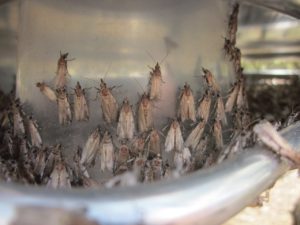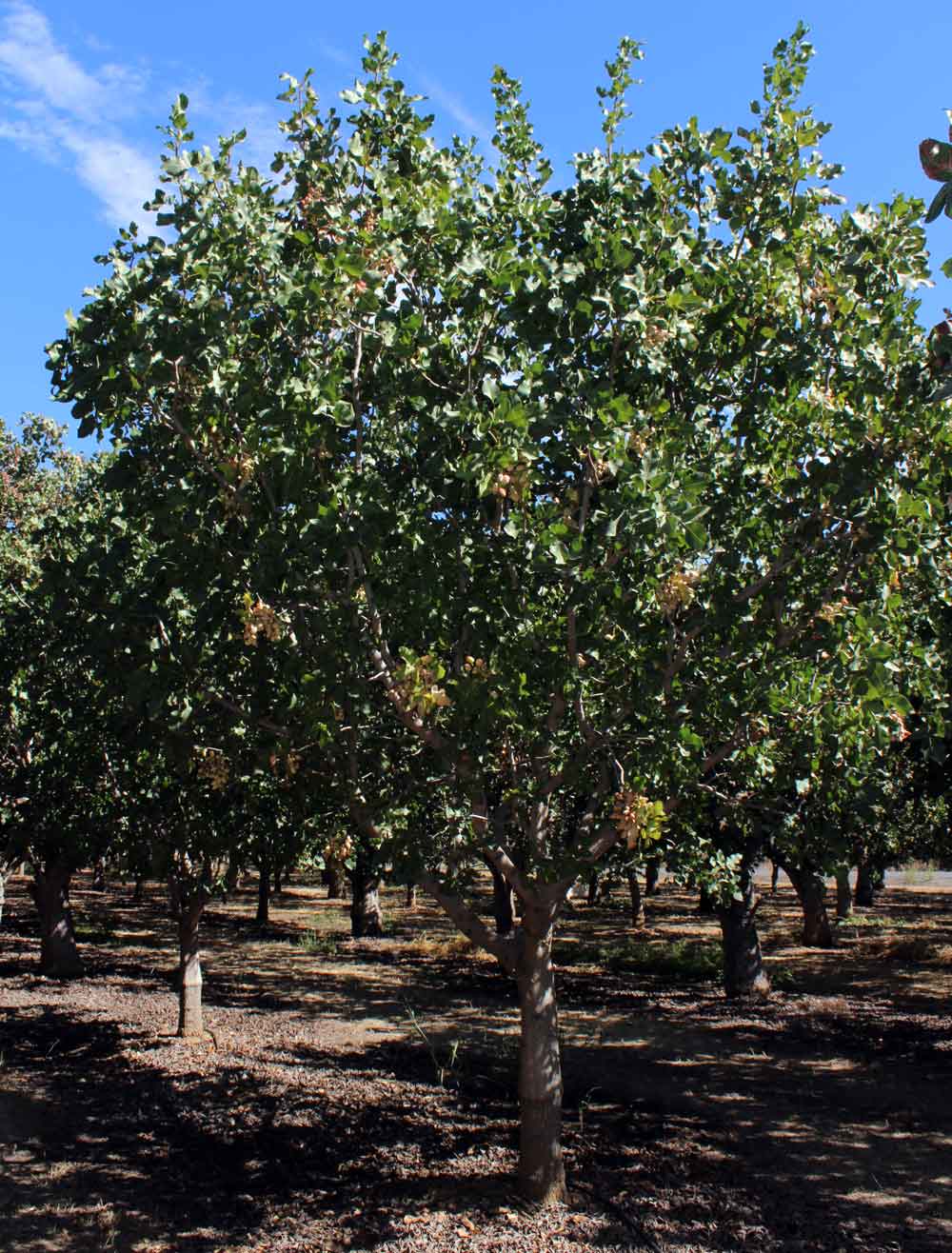Research to determine why sterilized navel orangeworm moths are not flying or following pheromone plumes when they are released in pistachio orchards continues at the University of California (UC) Kearney Agricultural Research and Extension Center.
The releases are part of the navel orangeworm (NOW) sterile insect technique (SIT) program funded first by the California Pistachio Research Board and more recently by the Almond Board of California. The NOW-SIT project is aimed at area-wide suppression of navel orangeworm, a serious pest of nut crops in California. Infestations of this lepidopteron pest affect nut quality in almonds, pistachios and walnuts.
Houston Wilson, a UC Riverside Cooperative Extension specialist in integrated pest management, along with United States Department of Agriculture (USDA) researcher Chuck Burks, has been evaluating the performance of the sterile NOW and helping to develop a long-term plan for this SIT program. The first mass releases of sterile NOW were conducted last year as part of a pilot program, in which aerial releases of 750,000 moths at a time were made five to six times per week over a large acreage of pistachios for most of the growing season.
Releases of sterilized NOW are meant to overwhelm native populations and lower reproduction rates—when a wild moth mates with a sterile moth, the offspring are no longer viable. Last summer, Wilson made multiple releases of thousands of sterile moths in a pistachio orchard at Kearney in an experiment meant to determine activity of irradiated male and female NOW. After releasing more than 100,000 sterile moths, he found that irradiated males rarely showed up in pheromone traps and never at mating tables used to measure moth mating activity. While more than 4,000 NOW were trapped during these trials, only 11 of them (0.24 percent) were the sterile irradiated moths that he had released.
Wilson’s role in the NOW-SIT program is to provide scientific input, collect performance data and coordinate program activities with other project collaborators, including USDA-APHIS (Animal and Plant Health Inspection Service), California Department of Food and Agriculture (CDFA) and of course the California Pistachio Research Board and Almond Board of California. He and Burks will continue to evaluate sterile moth performance in 2019, and are currently releasing, by hand, sterilized NOW in small blocks of pistachio and almonds in Kearney and the West Side Research Center.
This year, Wilson said he would be looking at how altering the radiation dose used for sterilization influences moth performance. Moths are mass raised at a USDA-APHIS facility in Arizona that  was previously used to produce sterile pink bollworms as part of an effort to eradicate that cotton pest.
was previously used to produce sterile pink bollworms as part of an effort to eradicate that cotton pest.
The rearing process, irradiation dose, shipping conditions and release method can all have an impact on the field performance of the sterile moth, Wilson said. In addition to modifying the radiation dose, a new strain of moth will also be introduced at the Phoenix facility this year. Wilson said the new line might be more active, but also noted that later generations could possibly decline in quality as they adapt to being reared in artificial conditions—which is a common challenge encountered by many mass-rearing programs.












